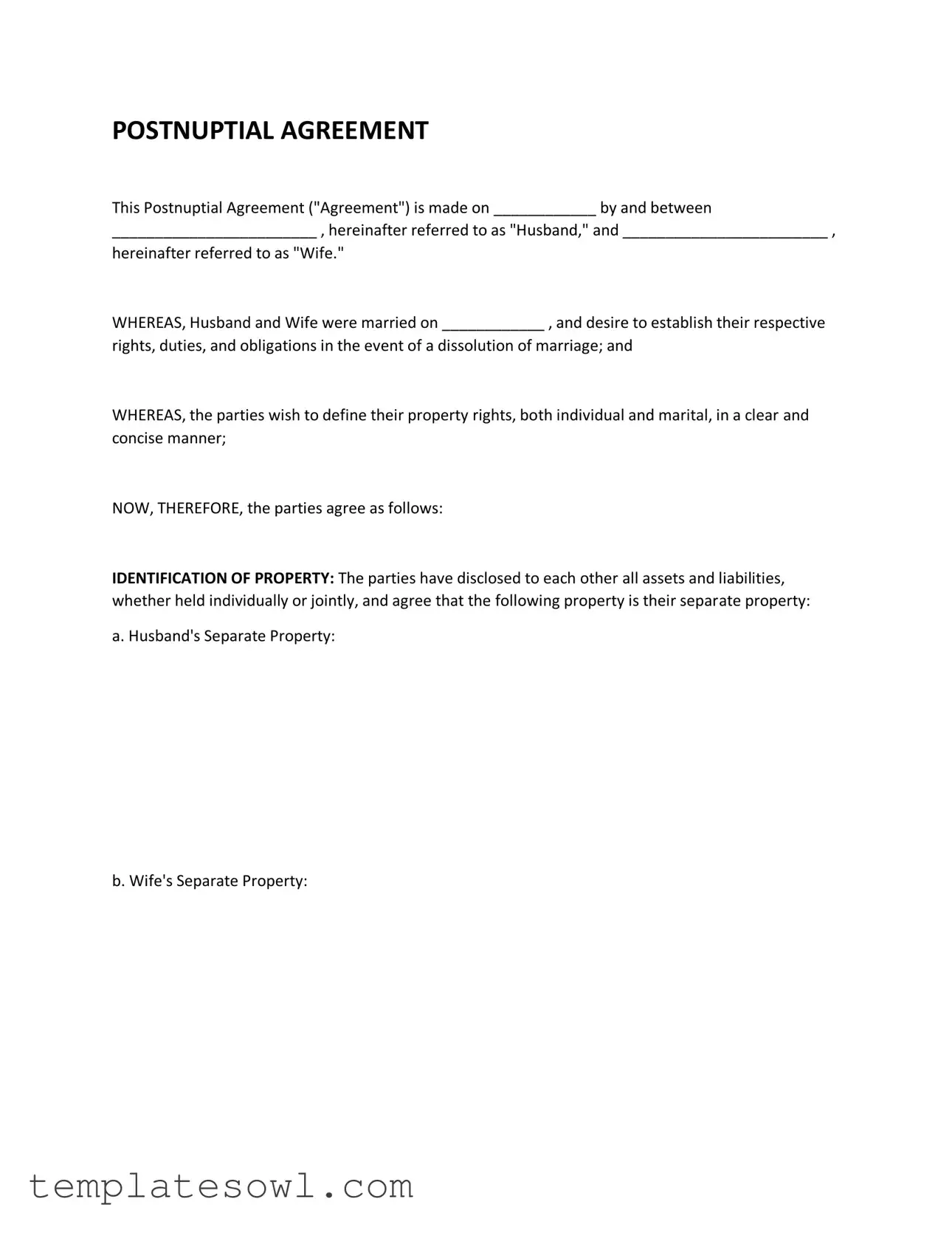POSTNUPTIAL AGREEMENT
This Postnuptial Agreement ("Agreement") is made on ____________ by and between
________________________ , hereinafter referred to as "Husband," and ________________________ ,
hereinafter referred to as "Wife."
WHEREAS, Husband and Wife were married on ____________ , and desire to establish their respective
rights, duties, and obligations in the event of a dissolution of marriage; and
WHEREAS, the parties wish to define their property rights, both individual and marital, in a clear and concise manner;
NOW, THEREFORE, the parties agree as follows:
IDENTIFICATION OF PROPERTY: The parties have disclosed to each other all assets and liabilities, whether held individually or jointly, and agree that the following property is their separate property:
a. Husband's Separate Property:
b. Wife's Separate Property:
MARITAL PROPERTY: The parties agree that the following property is marital property and shall be subject to equitable distribution in the event of a dissolution of marriage:
DIVISION OF MARITAL PROPERTY: In the event of a dissolution of marriage, the parties agree to divide the marital property as follows:
SPOUSAL SUPPORT: The parties agree that in the event of a dissolution of marriage, neither party shall be entitled to spousal support from the other.
ATTORNEY'S FEES: In the event of any legal action related to the enforcement of this Agreement, the prevailing party shall be entitled to recover reasonable attorney's fees and costs.
AMENDMENT: This Agreement may not be amended, modified, or terminated except in writing executed by both parties.
GOVERNING LAW: This Agreement shall be governed by the laws of the State of ____________.
ENTIRE AGREEMENT: This Agreement constitutes the entire understanding between the parties and supersedes all prior negotiations, understandings, and agreements between them.
EXECUTION: This Agreement shall be executed in duplicate, and each party shall retain one original.
IN WITNESS WHEREOF, the parties have executed this Postnuptial Agreement as of the date first written above.
HUSBAND: ___________________________
________________________
WIFE: _______________________________
________________________
